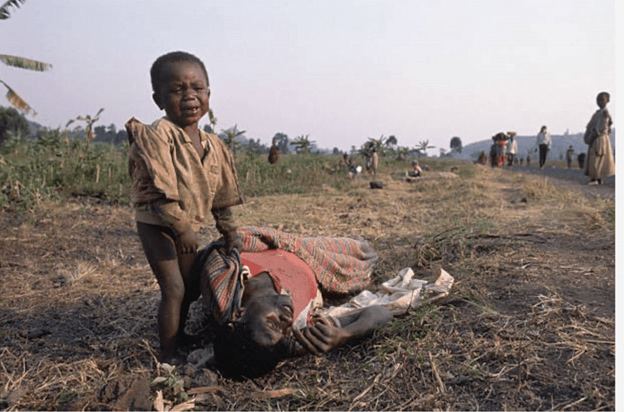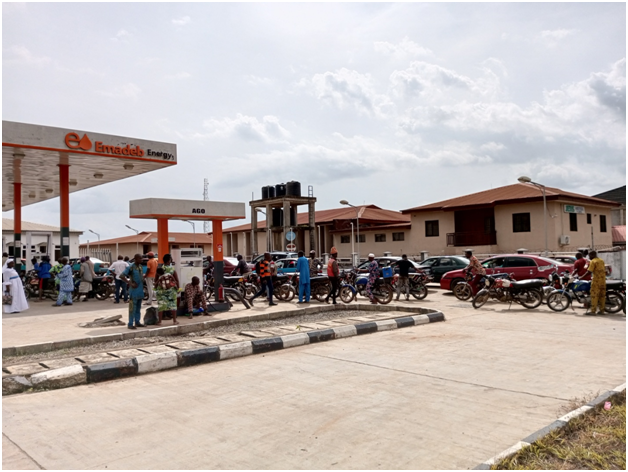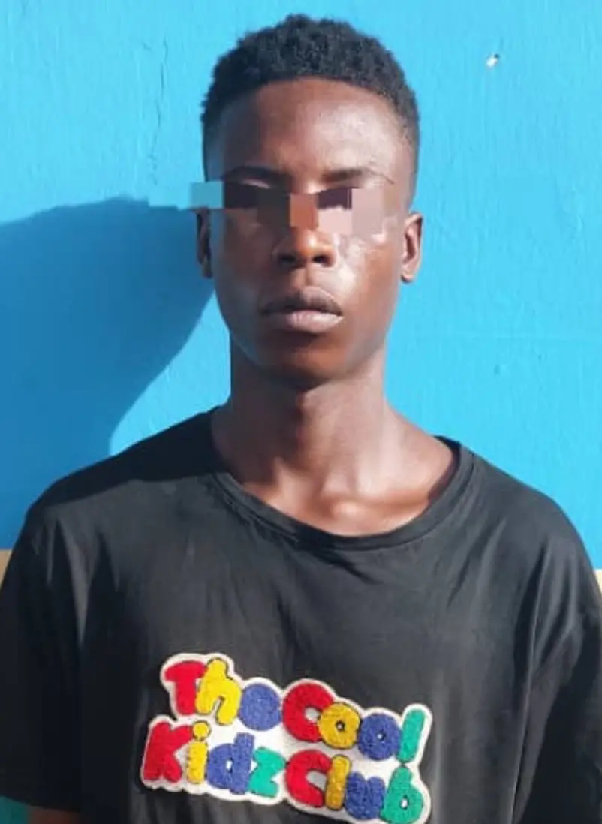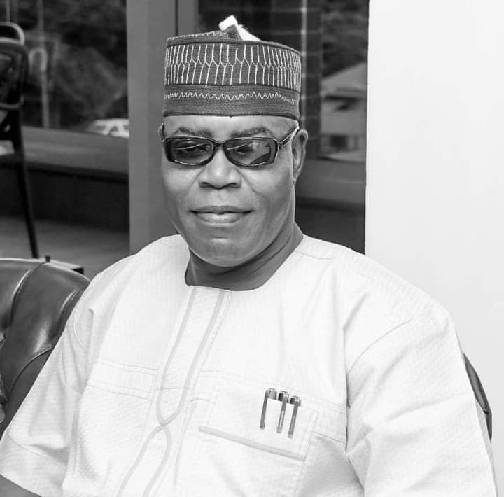Fact-check: Misleading image used to depict crisis in Congo

By Saheed Ibrahim
Claim: Multiple posts claim that the picture of a crying boy holding his deceased father was taken during the current crisis in Congo.
Verdict: Misleading! The picture was taken during the Rwanda Genocide in 1994.
Full Text
Democratic Republic of Congo witnessed a re-erruption of violence last year before the presidential election in December. The renewed violence is linked to militant groups fighting over territory and natural resources, extrajudicial killings by security forces, political violence, and rising tensions with neighbouring Rwanda. New York Times report of Dec 17, 2023, shows that “six million have died, and more than six million are displaced after decades of fighting and the ensuing humanitarian crisis in the eastern region of the Democratic Republic of Congo, drawing in neighbours, mercenaries and militias.” A report by the United Nations High Commissioner for Refugees, UNHCR, shows that about 1 million people have sought asylum in other African countries and predicts that more people will be displaced by the humanitarian crisis in 2024.
Following the situation, several images have emerged on social media platforms depicting the current crisis in the Democratic Republic of Congo. On April 7, 2024, an X user, African Hub (@AfricanHub_), posted a picture of a crying black boy holding his dead father to depict the current humanitarian crisis in the country. The caption of the image reads: Congo is silently going through a genocide. Don’t keep silent. Speak up for our Congolese brothers and sisters. Your comment on this…
Due to the account’s popularity on X, which has over 300,000 followers, the post has garnered 350,000 views, 16.6,000 reposts, 188 quotes, 423 bookmarks, 396 comments, and 23,100 likes.
The post’s comment section shows X users expressing emotional outbursts seeing the image. Comment from @Eralomusic reads: This breaks my heart. What can I do to help? @ShillMoBaggins commented – What a painful picture to see and @AdanniaT said The picture just ruined my day.
In a long thread on X, Idriss C. Ayat (@AyatIdrissa) used the same image to depict the current crisis in Congo. His thread has so far generated 2.6 million views, 18.700 reposts, 446 quotes, 24.300 likes and over 8,000 bookmarks. Multiple accounts have also used the picture to depict the crisis in Congo this year. The posts are being used to call attention to the humanitarian crisis in the country and the need to help the affected people. Examples of such posts can be found here, here and here.
Due to the virality of the image and suspicion surrounding it, DUBAWA decided to conduct a fact check.
Verification
DUBAWA conducted a Reversed Image Search on Google and Yandex and discovered that the image was taken during the Rwandan Genocide in 1994.
We found on Getty Images that the image is credited to Peter Turnley. Information on the page shows that the image was taken on January 1, 1994, and was uploaded in 2016.
The caption on the image reads Boy Crying over His Dead Father’s Body: A Rwandan boy cries over the dead body of his father, who has just died from cholera in a refugee camp in Zaire. Several minutes after this picture was taken, a Zairean man found the boy, brought him back to his village and adopted him. (Photo by Peter Turnley/Corbis/VCG via Getty Images). Zaire is now the Democratic Republic of Congo.
DUBAWA dug further to find information about Peter Turnley. His website shows that he is “renowned for his photography of the realities of the human condition, and he photographed the conflicts in the Balkans (Bosnia), Somalia, Rwanda, South Africa, Chechnya, Haiti, the Israeli-Palestinian conflict, Indonesia, Afghanistan, Kosovo, the war in Iraq-2003.”
Conclusion
The viral image used to depict the current crisis in Congo is misleading. The photo was taken during the Rwandan Genocide in 1994.
This report is produced for the DUBAWA 2024 Kwame Karikari Fact-Checking Fellowship in partnership with The Hope Newspaper to facilitate the ethos of truth in journalism and enhance media literacy in Nigeria.












